
In 1865 the United States government was pretty broke due to an internal war that lasted four years, but to be prepared for other possible conflicts the U.S. Army needed to keep up with the latest technological trend, self-contained rifle cartridges. These started appearing long before the War Between the States, the inevitable result of the development of the percussion cap, which appeared in the early 1800s when a Scottish Presbyterian minister, Rev. Alexander John Forsyth, developed a fulminate-based compound that exploded when sharply whacked. This resulted in caplock rifles, which immediately began to replace flintlocks, and eventually self-contained cartridges.
Some other armies around the world had already converted to cartridge rifles, though many were still relatively primitive, such as the paper cartridge for the Dreyse “needle-gun,” a boltaction single shot adopted by Prussia in 1841. The percussion cap was attached to the base of the .60-caliber bullet, and the Dreyse’s long firing pin (“needle”) pierced the paper and traveled through the powder to ignite the cap.
While a few cartridge rifles, including repeaters such as the Spencer lever action, had been used during the Civil War, the overwhelming majority of Union soldiers carried the Springfield Model 1861, a .58-caliber caplock muzzleloader, and its later, minor model variations. The U.S. Army had more than a million of these already obsolete rifles and decided to convert them into breechloaders at far less cost than producing new rifles.
This story is from the May - June 2020 edition of Rifle.
Start your 7-day Magzter GOLD free trial to access thousands of curated premium stories, and 8,500+ magazines and newspapers.
Already a subscriber ? Sign In
This story is from the May - June 2020 edition of Rifle.
Start your 7-day Magzter GOLD free trial to access thousands of curated premium stories, and 8,500+ magazines and newspapers.
Already a subscriber? Sign In
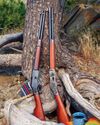
CIMARRON .32-20 Short Rifle & Carbine
In the heyday of Winchester Repeating Arms Company lever guns, it offered muskets, standard rifles, short rifles and saddle ring carbines.
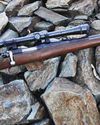
Remington's Model 722 and .222 Cartridge
It's easy enough to define what a varmint is, those pesky critters that tear up pastures, flower beds and all kinds of expensive crops people need for various reasons - most importantly, to make a living and/or something with which to feed themselves.

Coyote Bullets
What is Best for You?
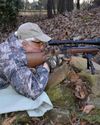
Remington's 5mm Rimfire Magnum
Shooting a Classic
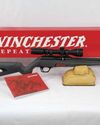
Winchester's New Wildcat
The Ultralight Rimfire Varmint Rifle
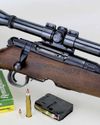
.223 Remington from .30-30 Winchester?
Multitasking for Varmints

LOADS FOR A .22 TCM
The .22 TCM first appeared commercially in 2012, chambered in a Rock Island Armory 1911-style handgun.
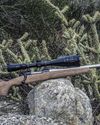
Everybody Loves Velocity
The 4,500-fps WSSM Project
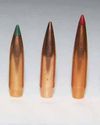
A BOLT-ACTION FRANCHI 224 VALKYRIE
Testing New Loads
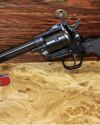
.22 Winchester Magnum Rimfire
Shooting Revolvers